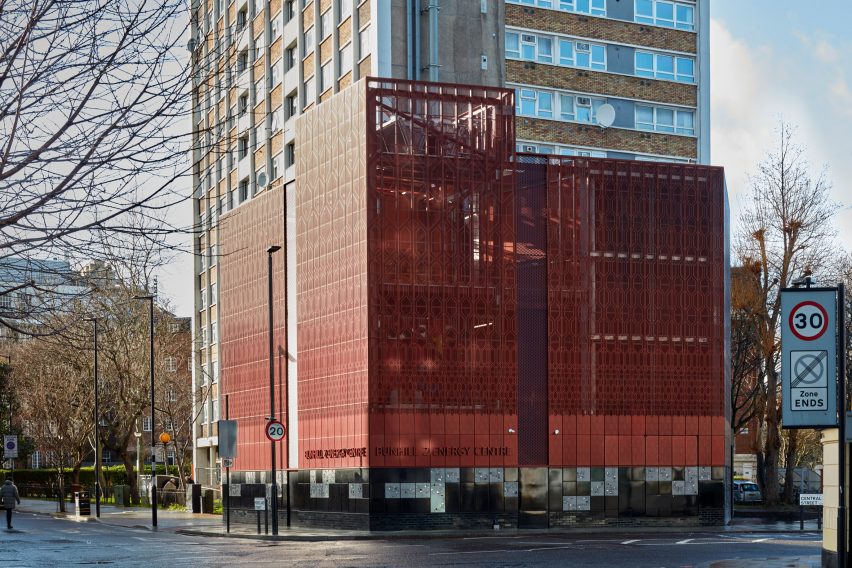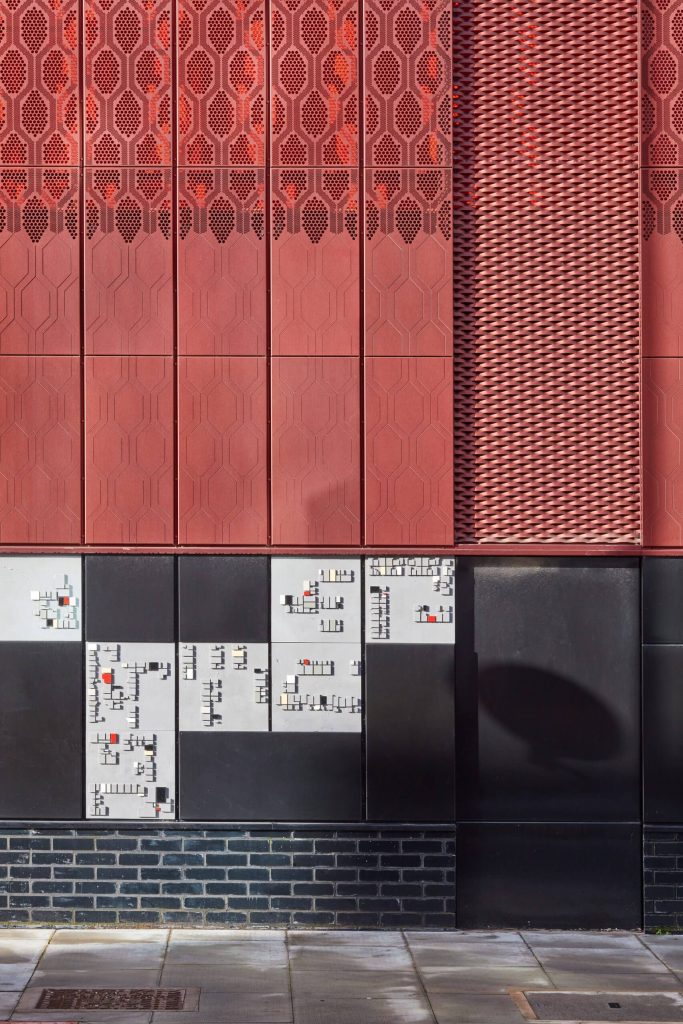
The underground networks have used the perforated red-metal and expanded red-metal as the structure .The Bunhill 2 Energy Centre has started capturing excess heat from the London Underground to help warm over 1,000 buildings in the UK capital.
A expanded red-metal pavilion by Cullinan Studio distinguishes the Bunhill 2 Energy Centre, which occupies the site of the disused City Road tube station that once formed part of the Northern Line.
It provides heating and hot water for hundreds of homes and several public buildings in the borough of Islington, helping to reduce heat bills, carbon emissions and air pollution in the capital.
It claims to be the first heat network of its kind in the world.
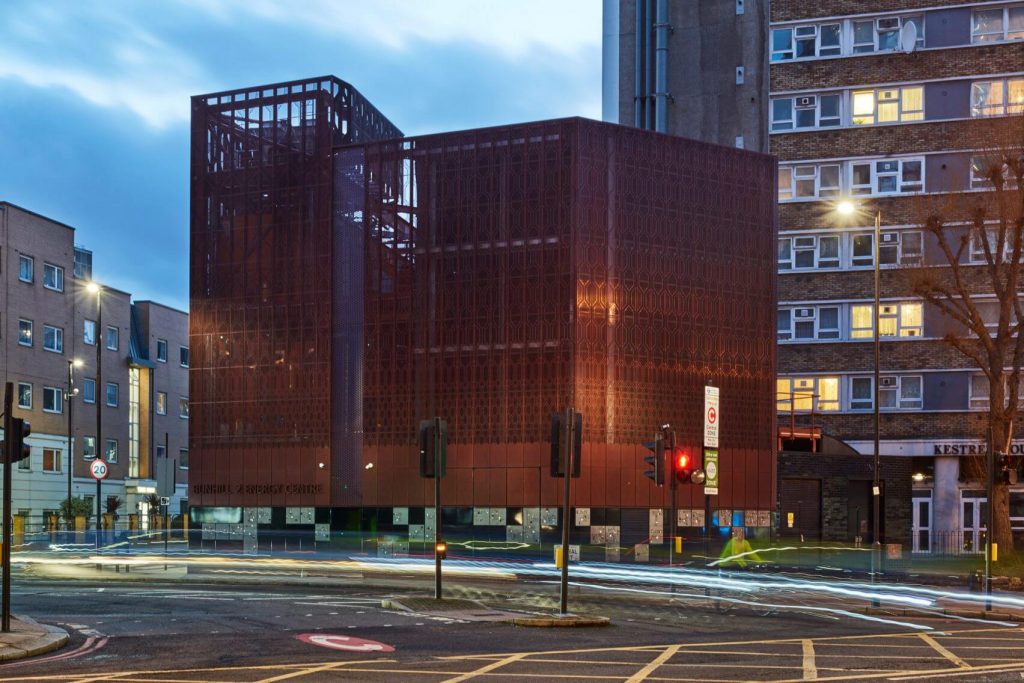
Bunhill 2 Energy Centre relies on a large underground fan that extracts hot air from the Northern Line tube’s tunnels, and uses it to heat water that can be transferred to the neighbourhood.
The project has been led by Islington Council, which commissioned engineering firm Ramboll to design and develop the system that is marked above level by a metal shroud by Cullinan Studio.
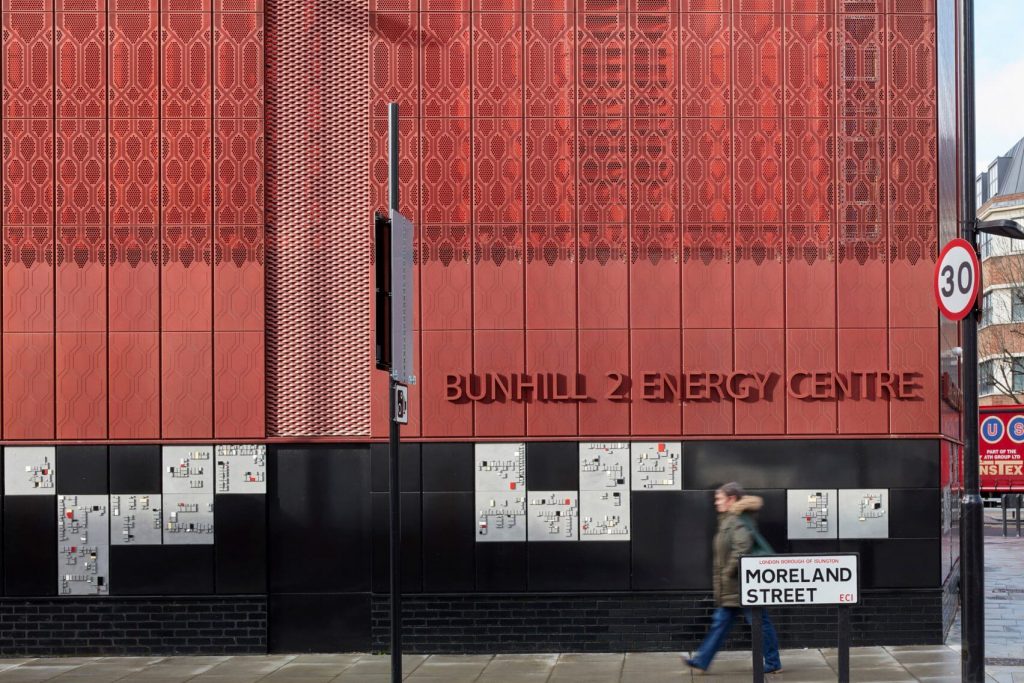
“Capturing waste heat from tube tunnels and using it to supply heating and hot water to thousands of local homes hasn’t been done anywhere in the world before,” said London Underground’s managing director Andy Lord.
“This ground-breaking partnership with Islington Council is a really important step,” he added.
“Heat from the London Underground has the potential to be a significant low-carbon energy source and we are carrying out further research, as part of our energy and carbon strategy, to identify opportunities for similar projects across the Tube network.”
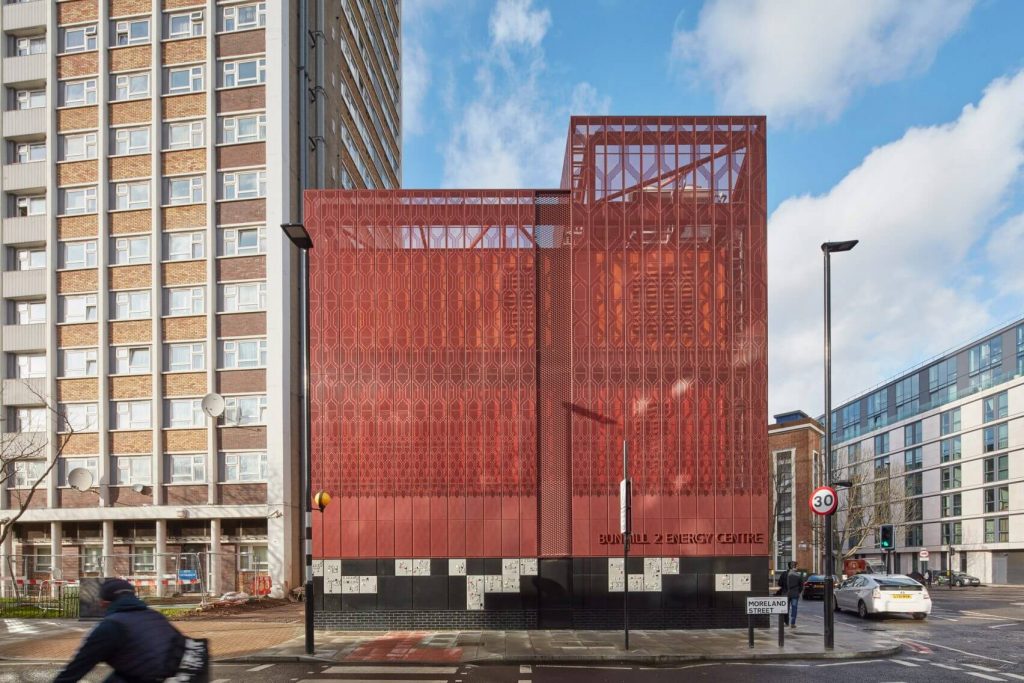
The cladding forms part of a prefabricated, panellised structure designed to easily and fully removable to accommodate the need for machinery maintenance.
It also ensured that its construction time was quick, helping to reduce disruption to the local community as it was built.
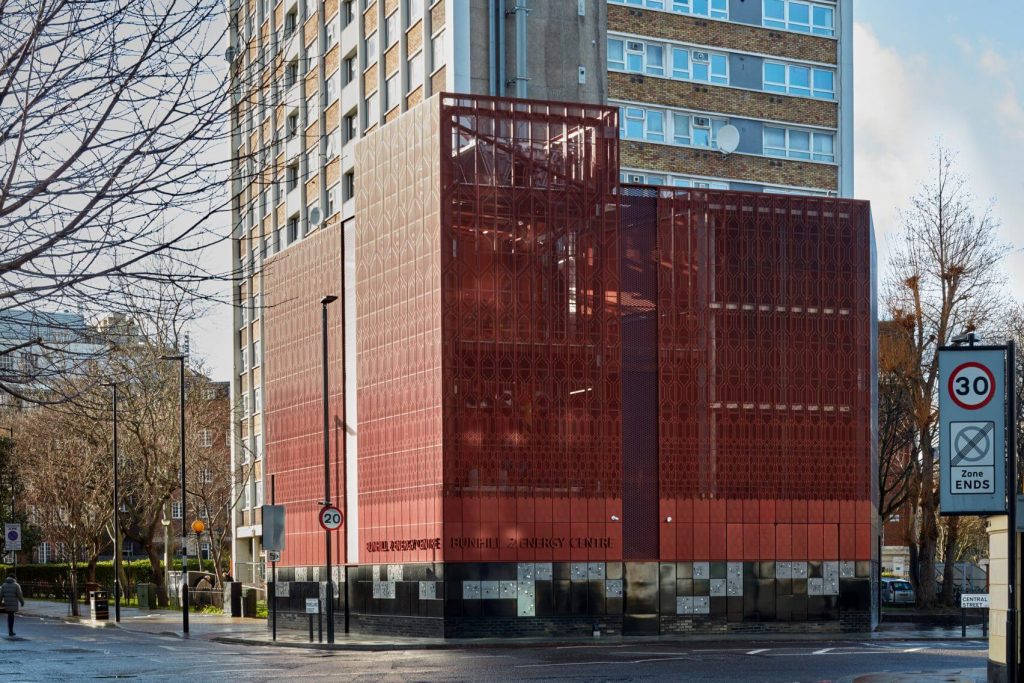
More inform. about the expanded red-metal
Please contact
email: sales@mesh.tech
